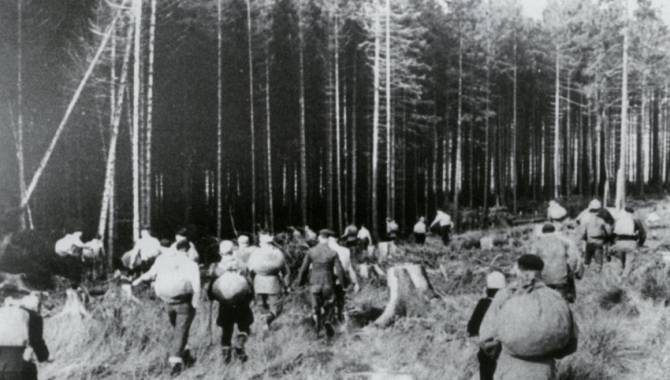Smuggling on the border
1/2


Description
It has not always been quite as easy to cross the border between Belgium and Germany as it is today. From the 1950s onwards, the border controls were reduced step by step, until they ceased to apply completely in 1995 under the Schengen Agreement.After the Second World War, the Aachen Forest was the scene of lively smuggling activities. On the German side many things were lacking, so that inhabitants of the border area went over to Belgium to barter objects of value for luxury goods such as coffee. That was a lucrative business, because in Belgium a kilo of roast coffee cost eight marks, whereas in Germany it could be sold for 16 or more. And even if this smuggling was at first pursued just to cover the smugglers' own needs, it wasn't long before professional bands of smugglers began to smuggle – or organise the smuggling of – coffee by the tonne. To achieve their objectives, the smugglers made great use of their imagination. For example, they converted items of clothing, ambulances or lorry tyres into hiding places for smuggled goods. Particularly successful smugglers sometimes spent a lot of money bribing the customs officers. Others got themselves fast cars that the latter couldn't keep up with.
Carte
Smuggling on the border